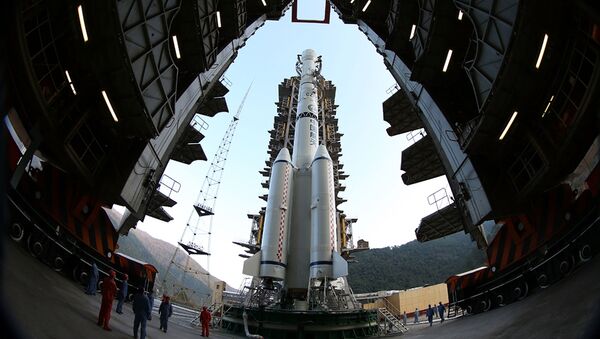China has set an ambitious goal of building a scientific research centre on the moon in “about 10 years” in the area of its South Pole, the state agency Xinhua reported citing the head of the China National Space Administration (CSNA), Zhang Kejian.
The aim is quite a departure from what NASA attained as a result of its six successful Apollo missions that landed in close proximity to the Moon’s equator, but not the pole areas, between 1969 and 1972.
The first parts of the projected station are due to reach orbit aboard the country’s new Long March 5B rocket in the first half of 2020, while the ISS is reaching the end of its functional scientific lifetime and there is no evidence that the US will start cooperating with China in terms of joint space endeavours.
Details about China’s long-term lunar goals have yet to be made public, but CSNA has already taken quite a few decisive steps with regard to space exploration: namely, the successful launch of an unmanned Chang’e-4 on the far side of the Moon. Kejian also announced that Chang'e-5, an unmanned lunar lander originally scheduled to reach the lunar surface in 2017, will attempt to land on the Moon and harvest samples for further research in 2019, Xinhua reported.
READ MORE: US Should Verify China's Activity on Moon Not Military Related — Army Official
In a separate move, China recently announced the successful placement of astronauts on two temporary space stations, Tiangong-1 and Tiangong-2, while a more permanent station is expected to start operating in the next few years.
China has been earmarking considerable sums for space exploration of late, coming second on the list of the top spenders right behind the US, according to OECD figures. The US’ plans to land humans on the moon have meanwhile hit some snags, due to the fact that NASA is heavily reliant upon a ride aboard a Russian rocket, or alternatively, on a commercial rocket enterprise, such as SpaceX – something that hasn’t yet been agreed upon.
Yet, the Trump administration made headlines last month announcing a 2024 target for getting back to the lunar surface, decades after the Apollo missions and four years ahead of the original schedule under the so-called Lunar Gateway project, which stipulates the creation of a permanent manned lunar base by 2020.


